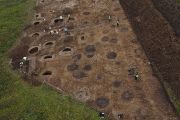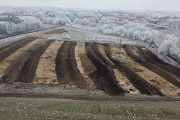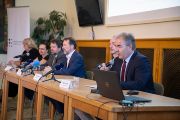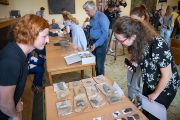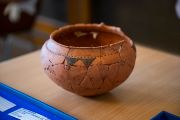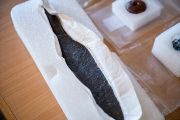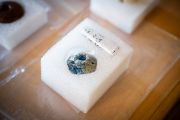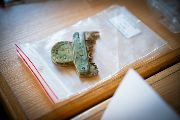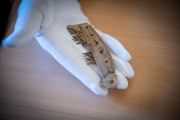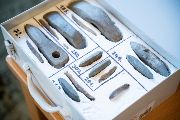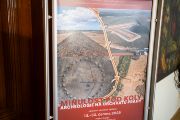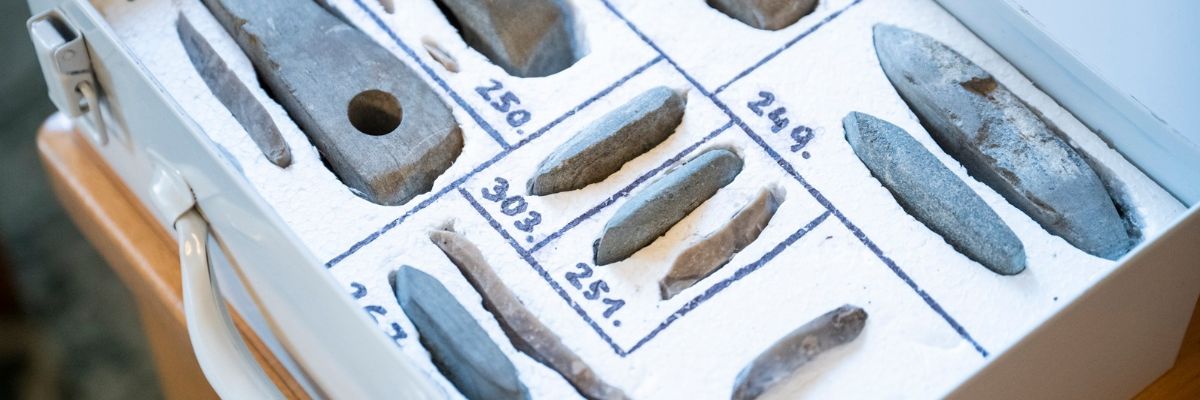
Archaeologists uncover ancient finds along Prague Ring Road
13. 06. 2025
How did our prehistoric ancestors live in the spot where one of the most anticipated transport projects in the Czech Republic is now taking shape – that is, the area around the Prague Ring Road (Pražský okruh)? And what remains did later cultures leave behind as they settled this region? Archaeologists have now wrapped up their fieldwork over a 126‑hectare site, collecting thousands of artifacts awaiting detailed study. At a press conference held on 12 June 2025 at the Czech Academy of Sciences, experts unveiled a series of fascinating finds, including Neolithic stone tools and amber beads that were once weighed against gold.
The team investigated an area equivalent in size to 362 football fields as part of a broad archaeological survey, which preceded construction of the missing segment of the Prague Ring Road between the D1 motorway and Běchovice – work that began in May 2024. The results?
Over ten thousand features have been documented, including exceptional finds from the Neolithic, Eneolithic, Bronze Age, Hallstatt and La Tène cultures, as well as from the Roman period, the Migration Period, and early medieval settlement. In addition, thousands of samples have been gathered for scientific analysis. All this material will help reconstruct the richest and most vivid picture possible of the geographic region around Prague and the people who lived there across various historical epochs.
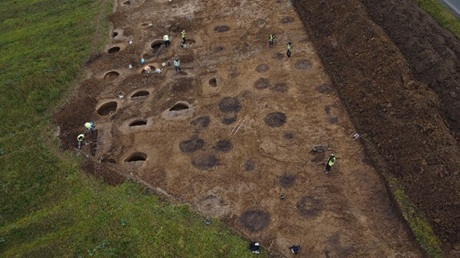
The archaeological excavations covered an area of 126 hectares.
At the start of the press conference – where only a small fraction of the finds was on display – CAS President Radomír Pánek emphasized that archaeology is a vital scientific discipline focused on preserving cultural heritage. Thanks to the work of the Institute of Archaeology of the CAS, Prague, the Institute of Archaeological Monument Care of Central Bohemia (Ústav archeologické památkové péče středních Čech), and the firm Osina Archeo, future generations will be able to understand how people lived, fought, and died in the areas that now surround the Czech capital. It is likely the first settlers appeared in this region as early as the Neolithic.
All archaeological fieldwork has now concluded. The researchers will face countless hours in the lab, meticulously cleaning, conserving, and documenting each artifact. What follows is almost detective‑like work – uncovering the stories behind each object. Who wore the beautiful golden hair spirals found near Běchovice? What was the purpose of the large amber beads and the prehistoric stone tools discovered in Nupaky? Only detailed investigation will insert these pieces into the broader mosaic of history.
In perfect symbiosis
More than a year has passed since excavator buckets began digging into the land in May 2024. In the initial stages, machinery removed the topsoil. Then experts from various disciplines – archaeology, geology, archaeobotany, archaeozoology, chemistry – focused on the future 13‑kilometer stretch of the Prague Ring Road, divided into five archaeological zones and 26 sub‑sections.
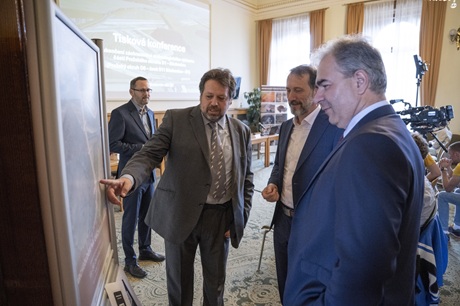
From left to right: Jan Mařík, Director of the Institute of Archaeology of the CAS, Prague, with Tomáš Gross from the Road and Motorway Directorate and CAS President Radomír Pánek, looking at the ‘Past Under Wheels’ exhibition poster.
“The goal of our experts isn’t to delay the construction,” Radomír Pánek reminded everyone. “On the contrary, we want to conduct rescue archaeological research in perfect symbiosis.” Some 160 to 200 people manually combed the excavation pits every day – undeterred by rain, heat, or freezing winter conditions. “There was a fairly high level of discomfort involved, and the archaeologists truly deserve thanks for persevering,” noted Tomáš Gross from the Road and Motorway Directorate, adding that no further delay to the construction of the Prague Ring Road is expected.
The archaeological Prague Ring Road project – by scale and by the number of discoveries – has been one of the largest the Institute of Archaeology of the CAS (Prague) has ever undertaken. The fieldwork was preceded by no less important preparation: “We pore over archives, survey the site non‑invasively, and plan everything we possibly can in advance in order to streamline the excavation work, also in coordination with construction. Archaeological research simply has to function like a well‑oiled machine,” explained Jan Mařík, director of the Institute of Archaeology of the CAS in Prague.
Meticulous work in the lab
The public will have to wait a bit longer to see the precious artifacts displayed in museums. But starting 13 June 2025, a panel exhibition titled Past Under Wheels will begin touring seven municipalities affected by the bypass construction – the first stop being Dubeč. A mobile app will allow visitors to view 3D models of some of the archaeological finds.

A three-part bone comb adorned with a motif typical for the Migration Period.
Among the items is a beautifully decorated bone comb from the Migration Period. It was used to groom both hair and beard, so it may have belonged to a man or woman. “We see this, for instance, with the Germanic peoples, who had sophisticated hairstyles,” archaeologist Milan Kukla explained. The comb – which has dozens of fine teeth – is a real conservator’s delight. “Most of the teeth are broken off. So our job is to figure out which tooth goes where, clean them, and glue the fragments back together,” described team member Petra Maříková Vlčková, shedding light on the behind‑the‑scenes lab work.
The team is only gradually revealing the stories behind thousands of objects – including ceramic vessels decorated with bird and horse motifs, gold and silver jewelry, work tools, and weapon fragments. But even at this early stage, they already know they’ve uncovered real treasure.
Written and prepared by: Jana Bečvářová, External Relations Division, CAO of the CAS, drawing on the CAS press release
Translated by: Tereza Novická, External Relations Division, CAO of the CAS
Photo: Josef Landergott, External Relations Division, CAO of the CAS; Institute of Archaeology of the CAS, Prague
 The text and photos are released for use under the Creative Commons license.
The text and photos are released for use under the Creative Commons license.
Read also
- Our microbiome largely depends on what we eat, says microbiologist Michal Kraus
- The ABCs of writing: Why did its invention mark a turning point for humankind?
- We learn, remember, forget… What can memory actually do? And can we outsmart it?
- New Center for Electron Microscopy in Brno opens its doors to global science
- The hidden lives of waste: What can we learn from waste workers and pickers?
- A unique lab is hidden right beneath Prague’s Vítkov Hill
- Renewables are a strategic investment in European security, scientists say
- New record set for neutrino mass: one million times less than an electron
- On the trail of the endangered little owl: searching for newly hatched owlets
- Teen scientist breaks barriers: No child is a lost cause
The Czech Academy of Sciences (the CAS)
The mission of the CAS
The primary mission of the CAS is to conduct research in a broad spectrum of natural, technical and social sciences as well as humanities. This research aims to advance progress of scientific knowledge at the international level, considering, however, the specific needs of the Czech society and the national culture.
President of the CAS
Prof. Eva Zažímalová has started her second term of office in May 2021. She is a respected scientist, and a Professor of Plant Anatomy and Physiology.
She is also a part of GCSA of the EU.
